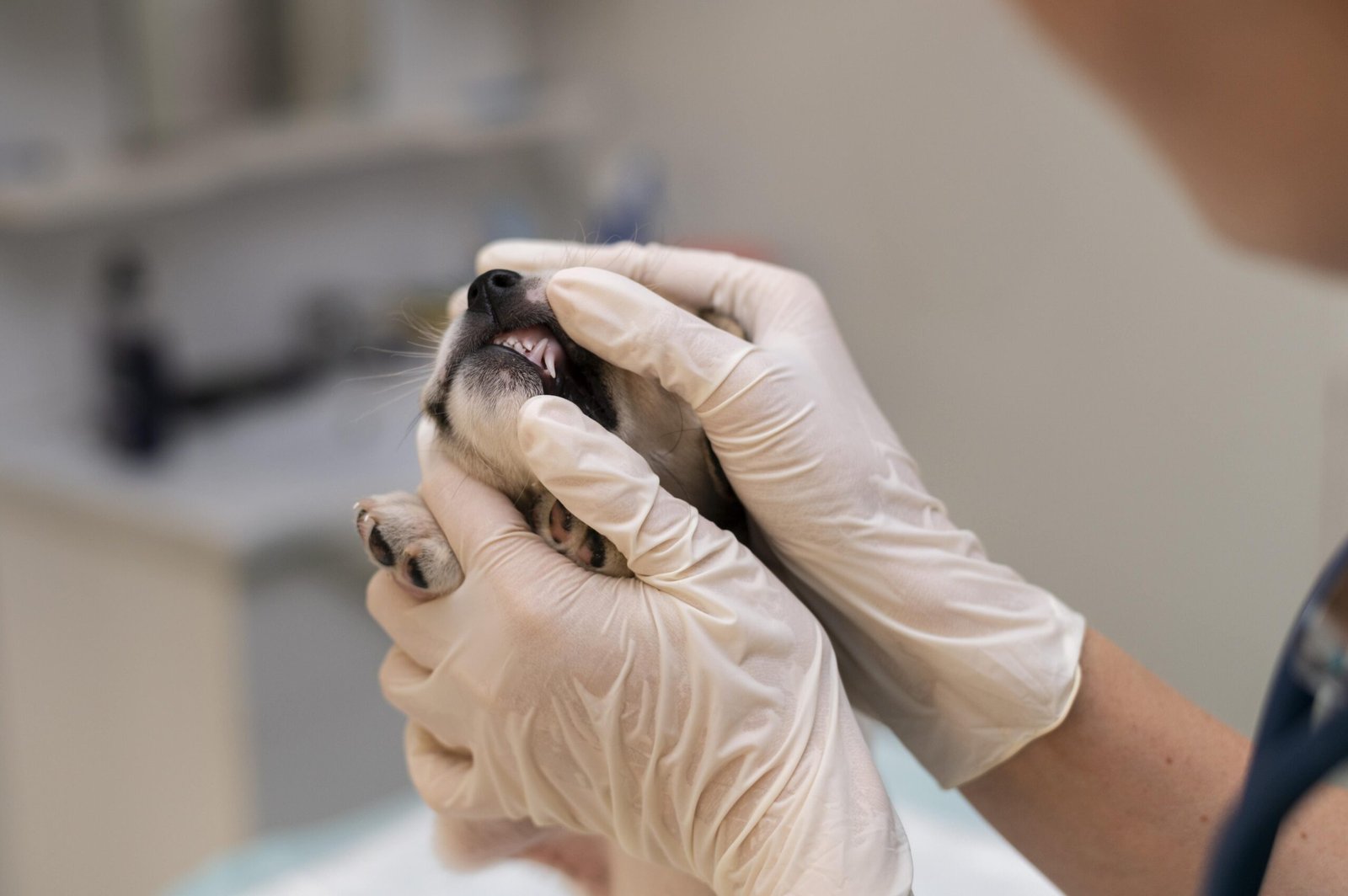
Pet oral health is often overlooked, but it plays a crucial role in a pet’s overall well-being. Pet oral surgery is sometimes necessary to treat severe dental issues, infections, or oral injuries in pets. This guide will walk you through the key aspects of veterinary oral surgery, from recognizing the signs to post-surgery care.
Signs Your Pet May Need Pet Oral Surgery:
Many pet owners are unaware that their furry companions might be suffering from dental pain. Some common signs that indicate your pet may need pet oral surgery include:
- Bad breath (persistent foul odor despite regular cleaning)
- Drooling excessively or difficulty eating
- Swollen gums or bleeding
- Loose or missing teeth
- Visible lumps, tumors, or growths in the mouth
If you notice any of these signs, consult a veterinarian immediately.
Common Types of Pet Oral Surgery:
Depending on your pet’s condition, a veterinarian may recommend one of the following pet dental procedures:
1. Pet Tooth Extraction:
When a tooth is severely decayed, broken, or infected, tooth extraction for dogs and cats becomes necessary. Removing a damaged tooth can prevent further oral complications.
2. Pet Gum Surgery:
Pets can suffer from periodontal disease, leading to gum infections that may require surgical intervention. Gum surgery for pets helps restore oral health and prevent further complications.
3. Oral Tumor Removal:
Some pets develop tumors or abnormal growths in their mouths, which may require veterinary oral surgery to remove them safely.
4. Jaw Fracture Repair:
Accidents or injuries can result in jaw fractures, and pet oral surgery is often required to repair the damage and restore function.
What Happens During a Pet Oral Surgery?
If your pet is scheduled for pet oral surgery, here’s what you can expect:
- Pre-Surgery Examination: The vet will conduct X-rays and tests to assess your pet’s oral health.
- Anesthesia Administration: Pets are placed under anesthesia to ensure a painless procedure.
- Surgical Procedure: Depending on the diagnosis, the veterinarian will perform tooth extraction, gum surgery, or another oral procedure.
- Post-Surgery Monitoring: Pets are closely monitored until they recover from anesthesia.
Post-Surgery Recovery: How to Care for Your Pet After Oral Surgery:
Proper aftercare is essential to ensure a smooth recovery. Here are some pet dental surgery recovery tips:
- Provide soft food for the first few days after surgery.
- Administer prescribed pain relief and antibiotics as instructed by the vet.
- Keep your pet calm and avoid rough play to prevent stress on the healing area.
- Monitor for any signs of infection, such as excessive swelling or bleeding.
- Schedule follow-up visits to ensure proper healing.
Preventing Dental Issues: How to Maintain Your Pet’s Oral Health:
Prevention is always better than cure. To reduce the risk of needing pet oral surgery, follow these pet dental care tips:
✅ Regular Brushing: Brush your pet’s teeth with pet-safe toothpaste.
✅ Dental Treats & Toys: Use chew toys and treats designed to improve dental health.
✅ Routine Vet Checkups: Regular dental exams can detect early signs of problems.
✅ Healthy Diet: Avoid feeding your pet excessive sugary or processed foods.
Conclusion: Why Pet Oral Surgery is Important for Your Pet’s Health:
Pet oral surgery is a crucial medical procedure that helps maintain your pet’s overall health. Whether it’s tooth extraction, gum surgery, or treating an oral tumor, timely intervention can prevent severe complications and improve your pet’s quality of life.If you’re looking for expert veterinary care, Royal Pets Veterinary Clinic | Khalifa City Branch offers professional pet oral surgery services to ensure the best dental health for your pet. Schedule a consultation today to keep your furry friend’s smile healthy and pain-free!
Learn more about your pet’s health:

